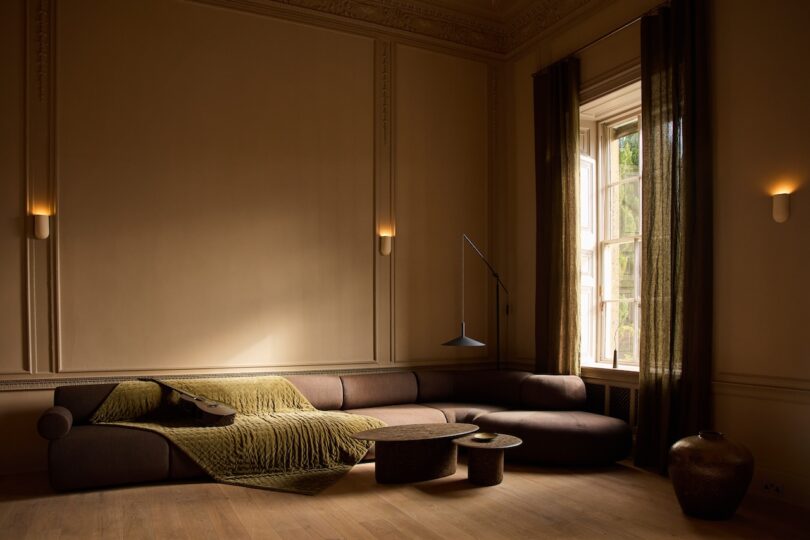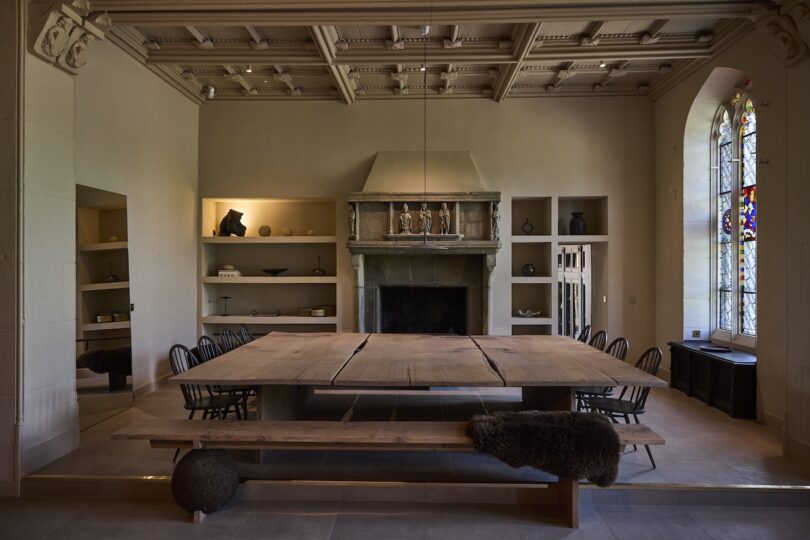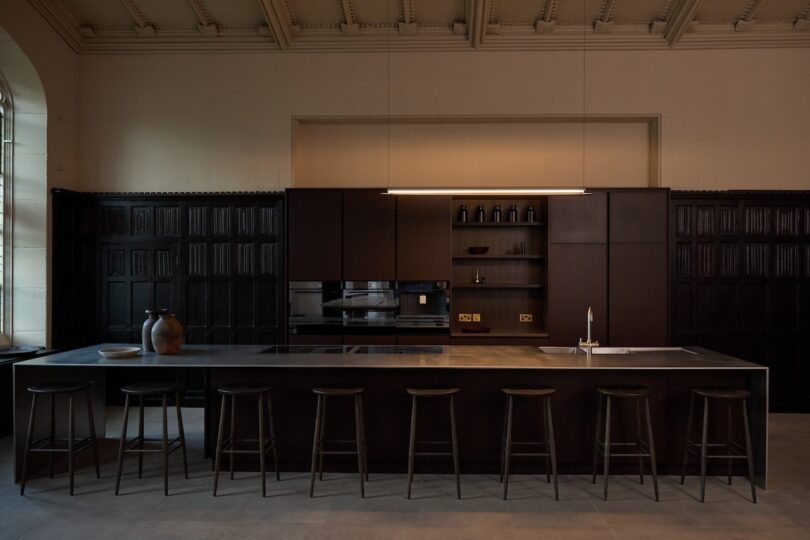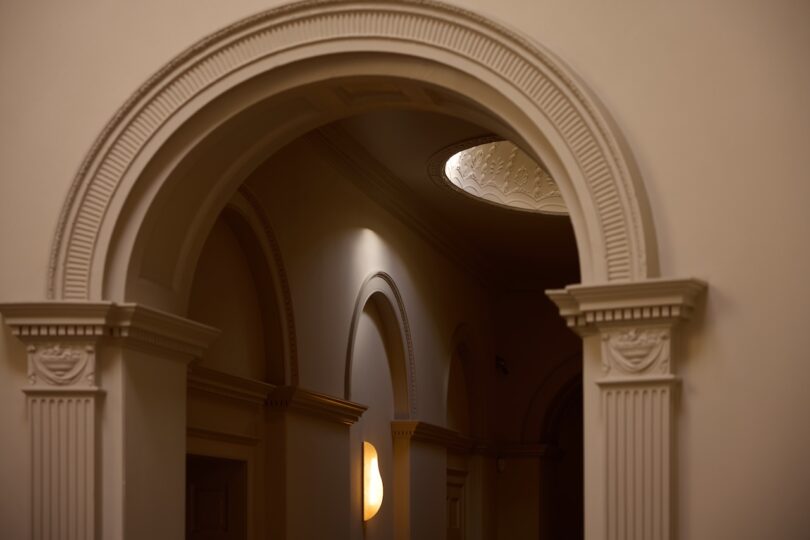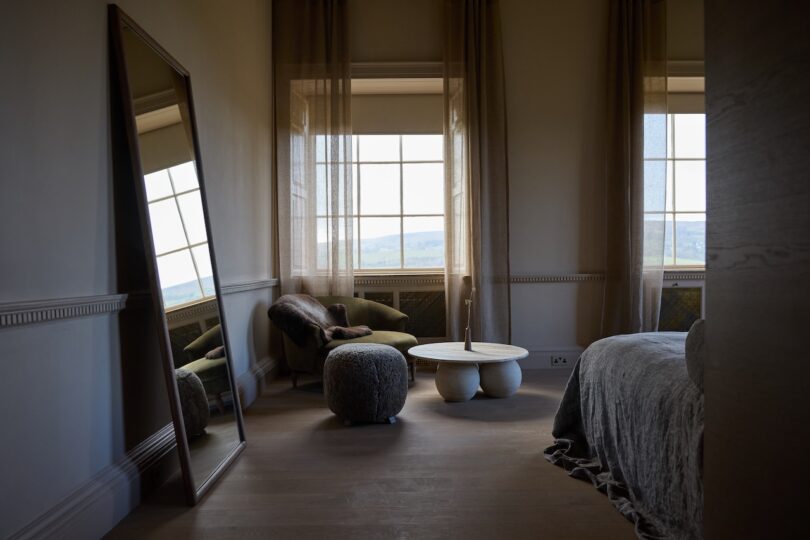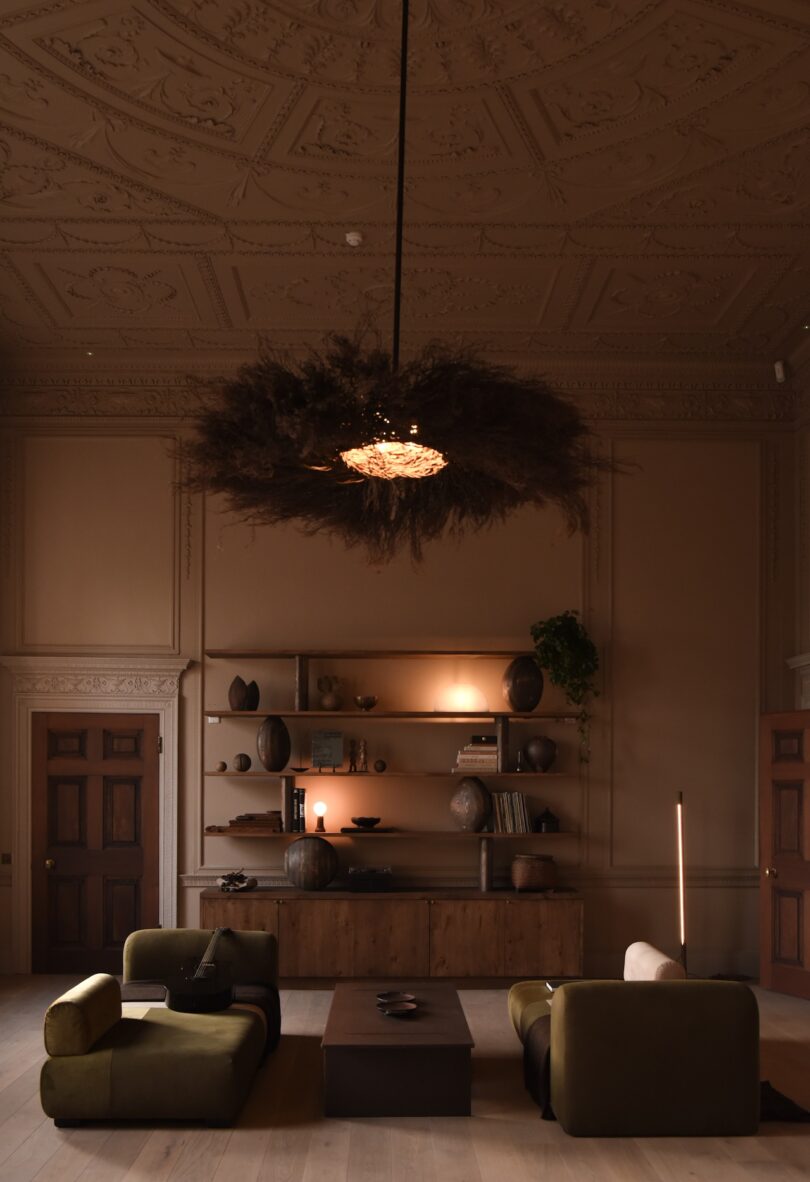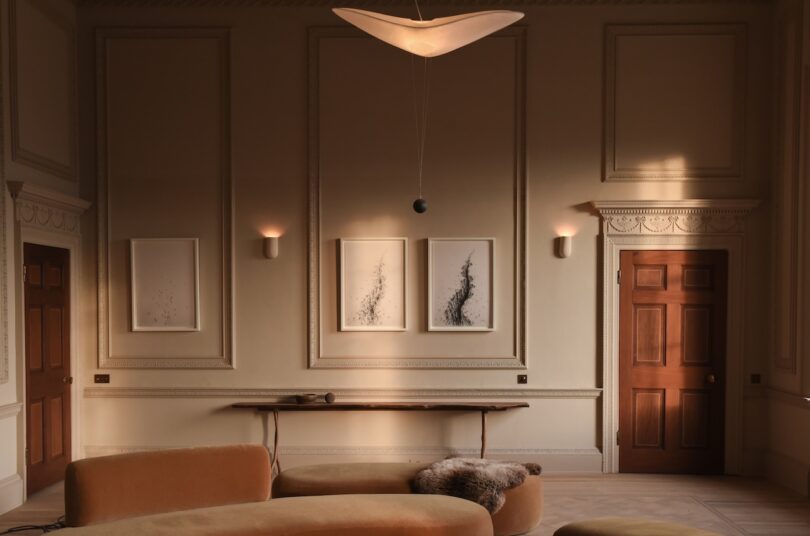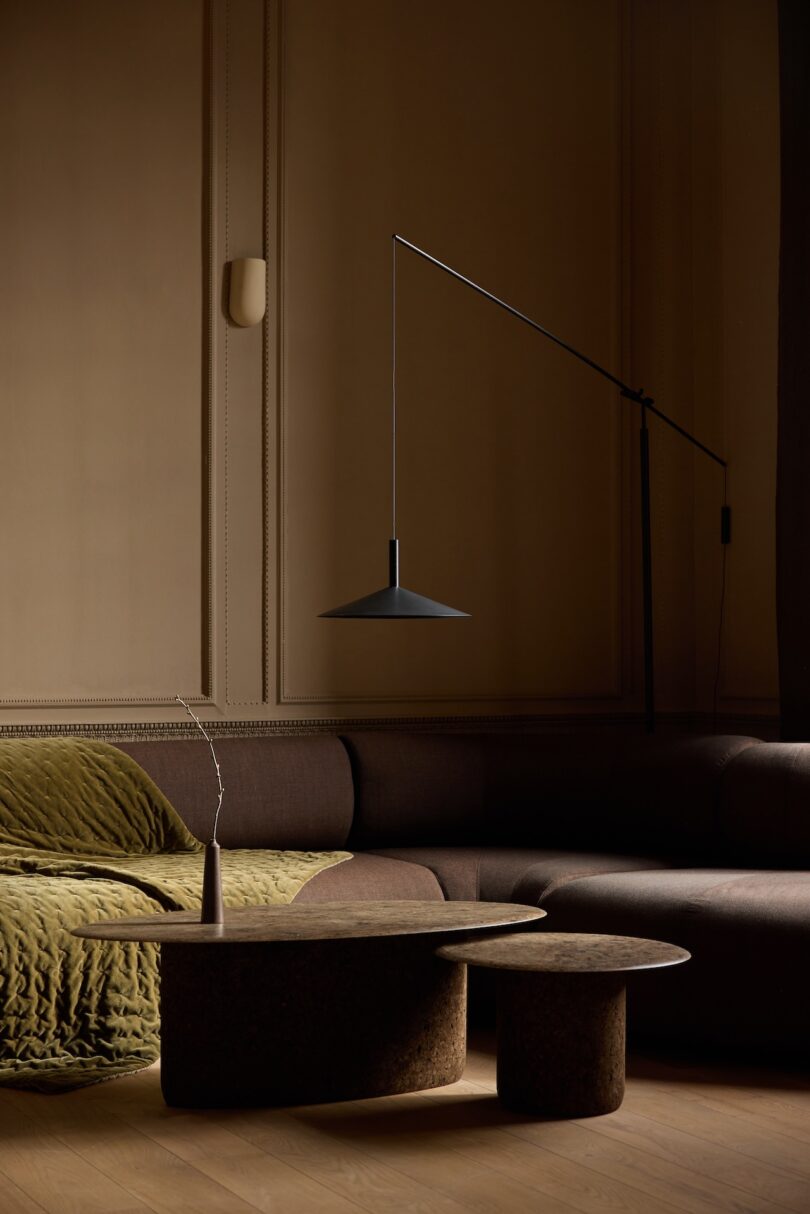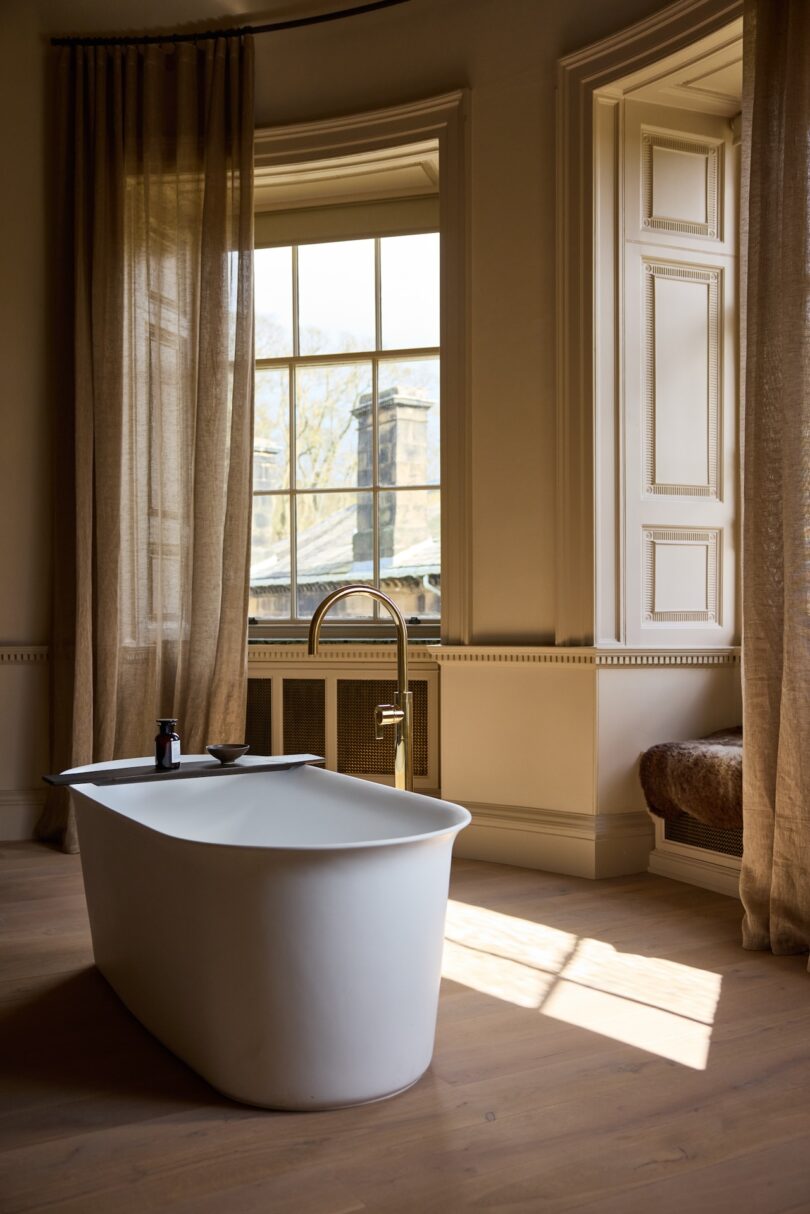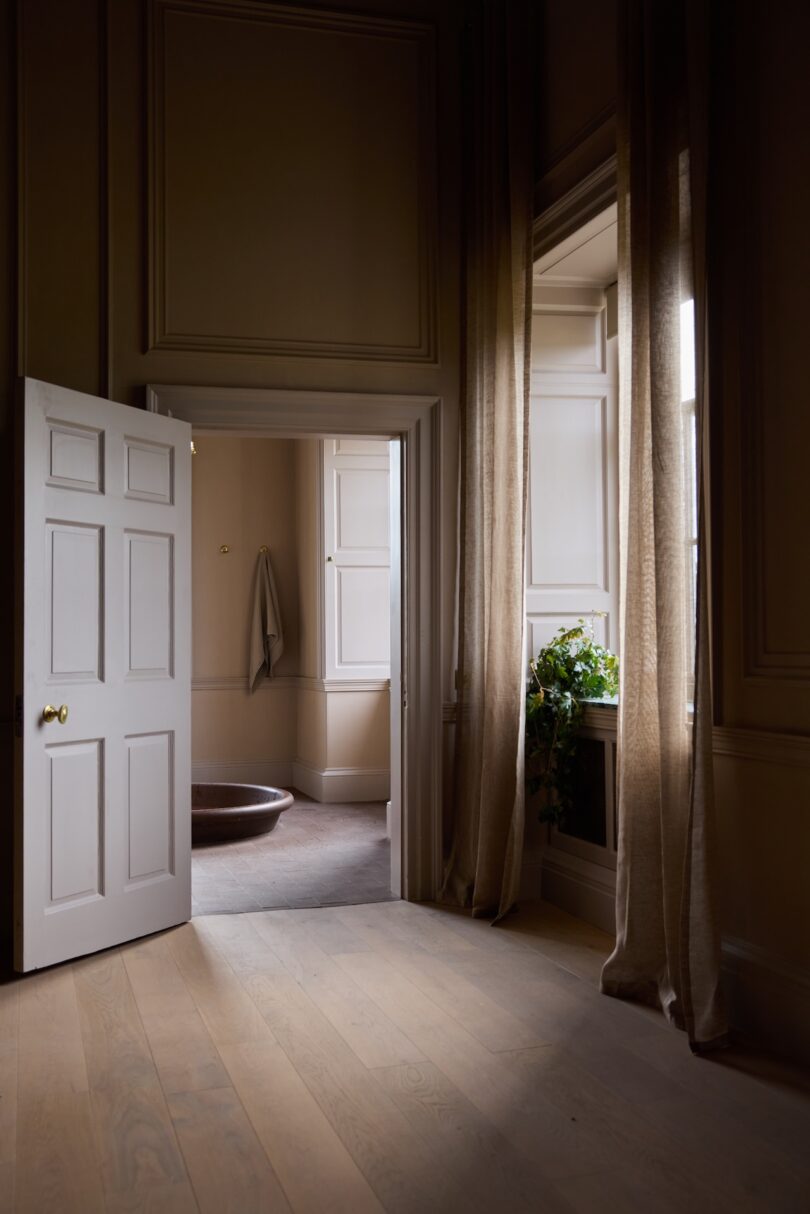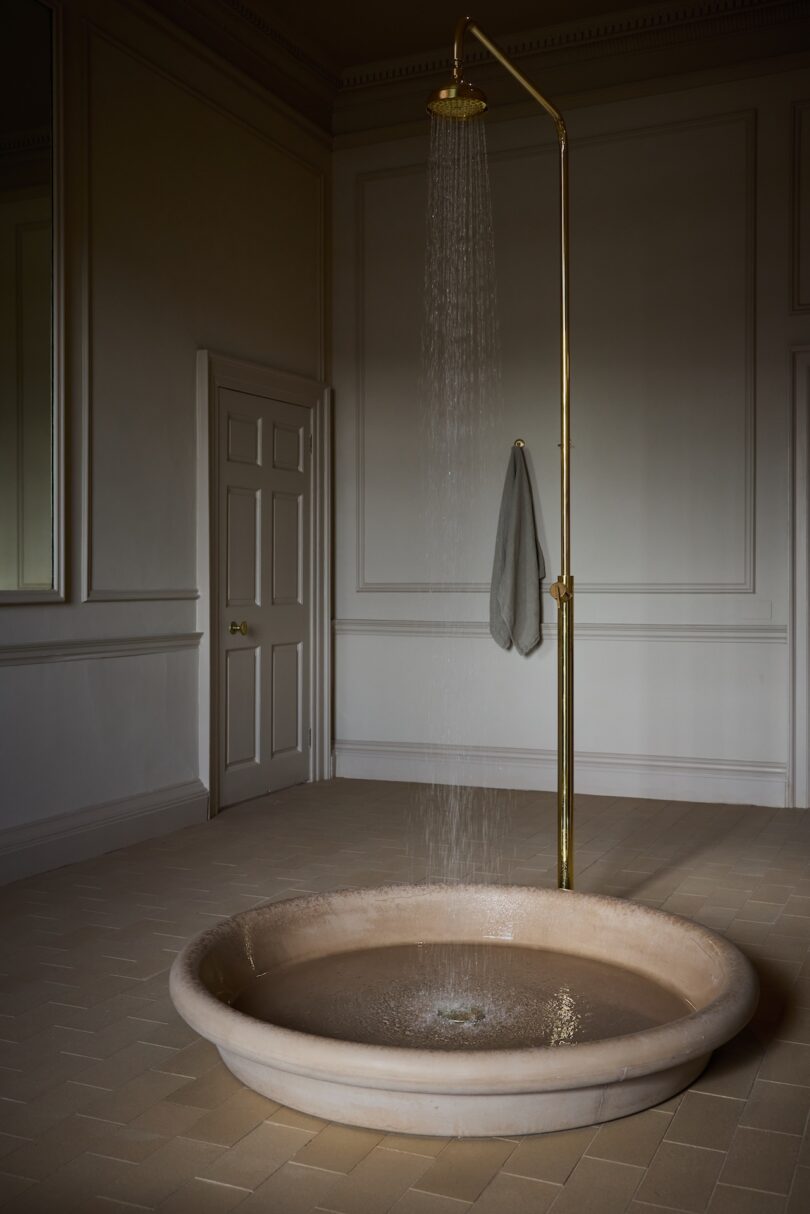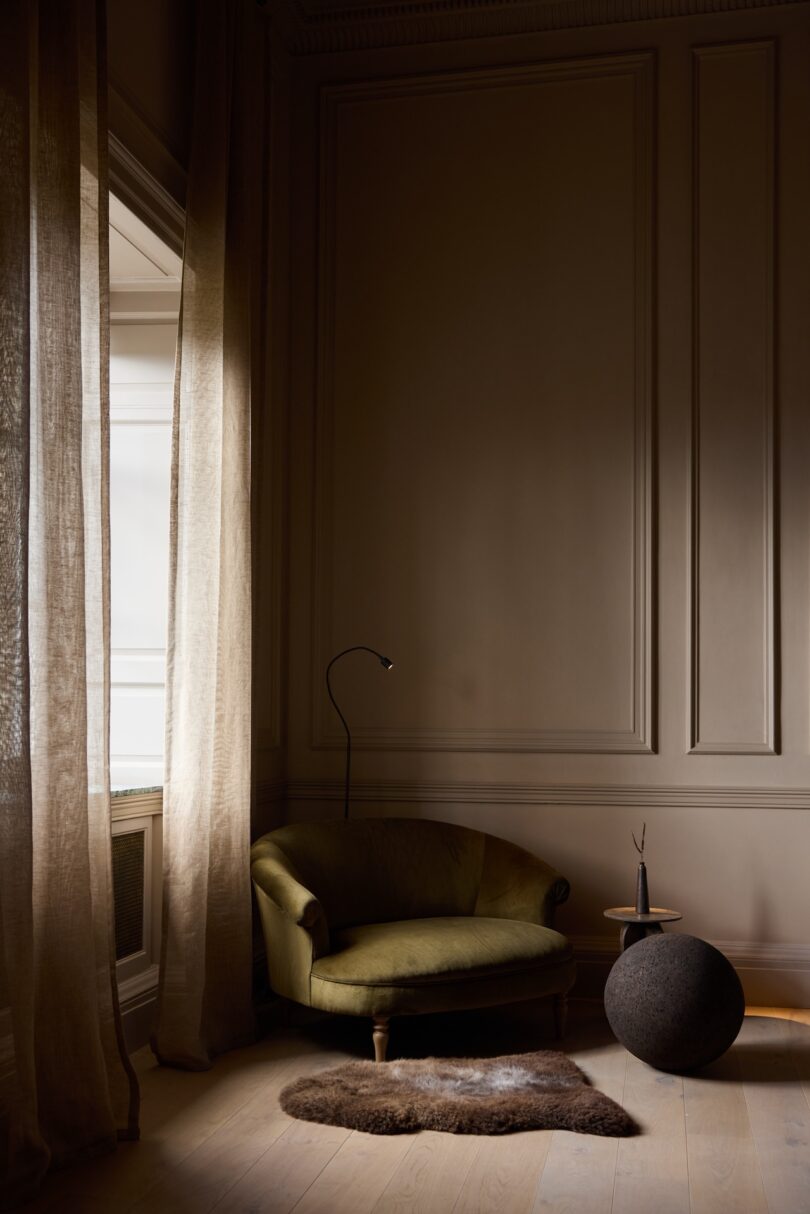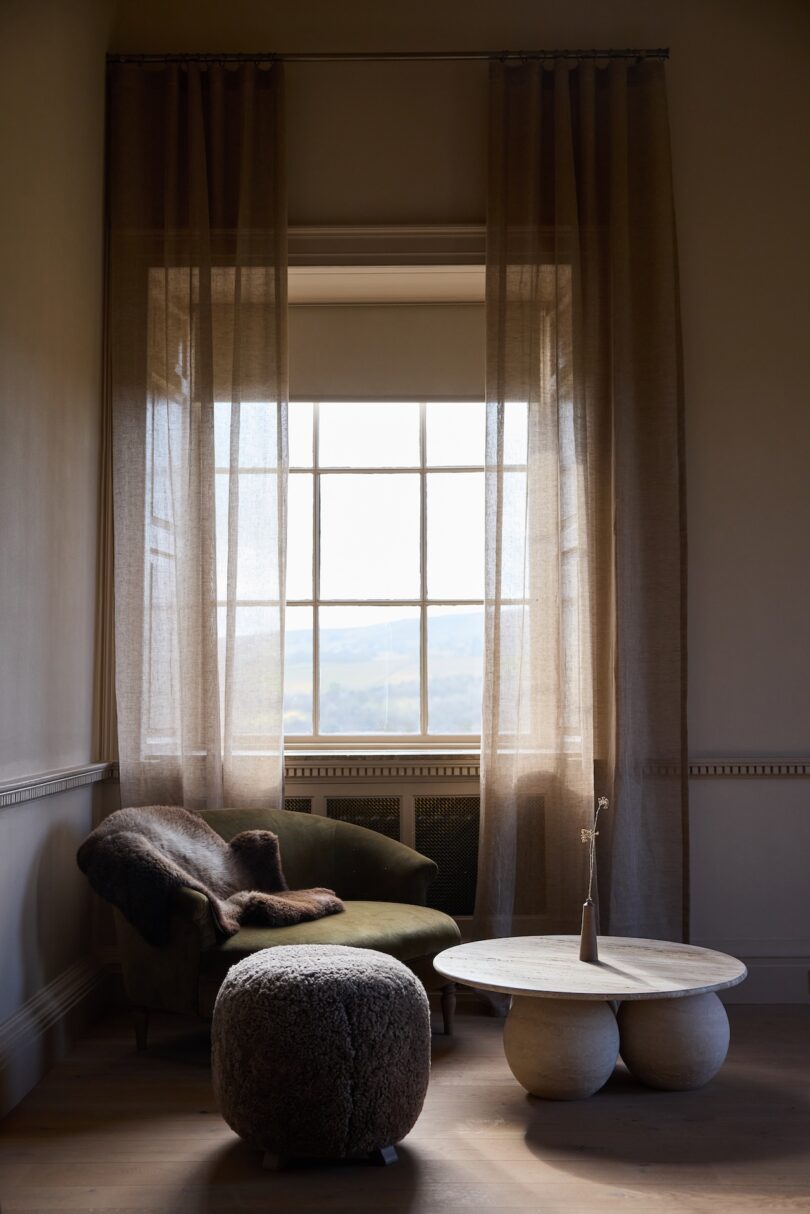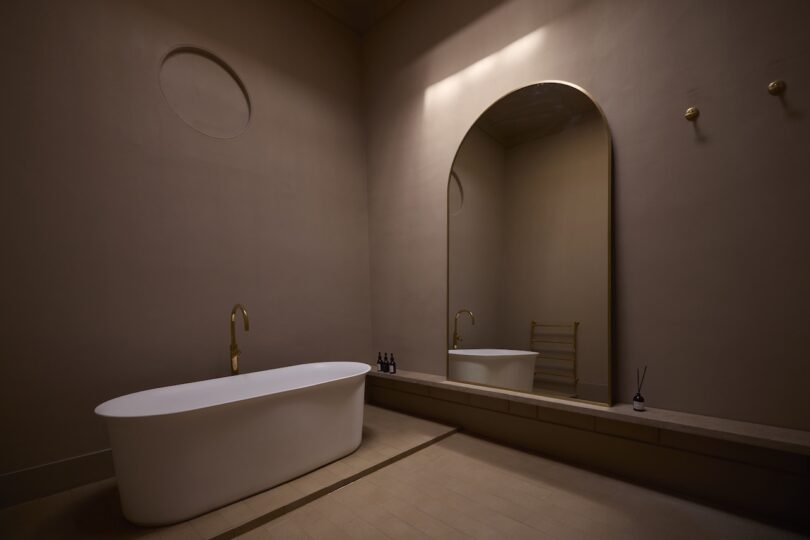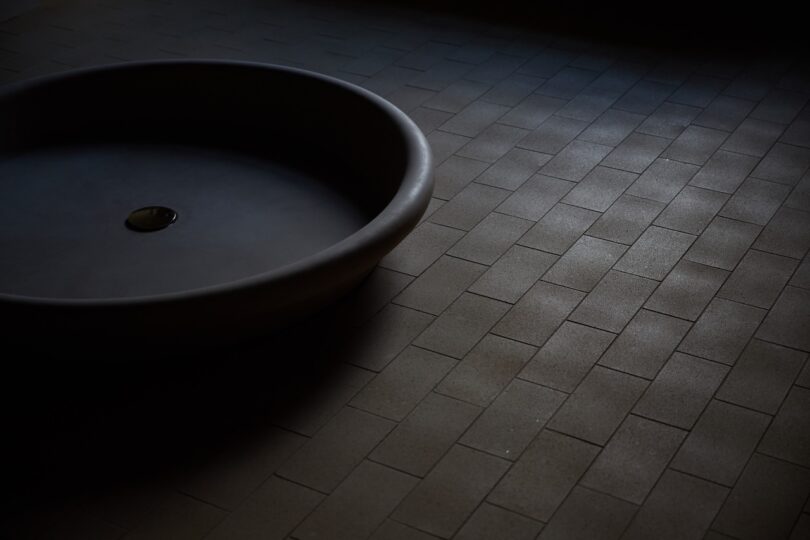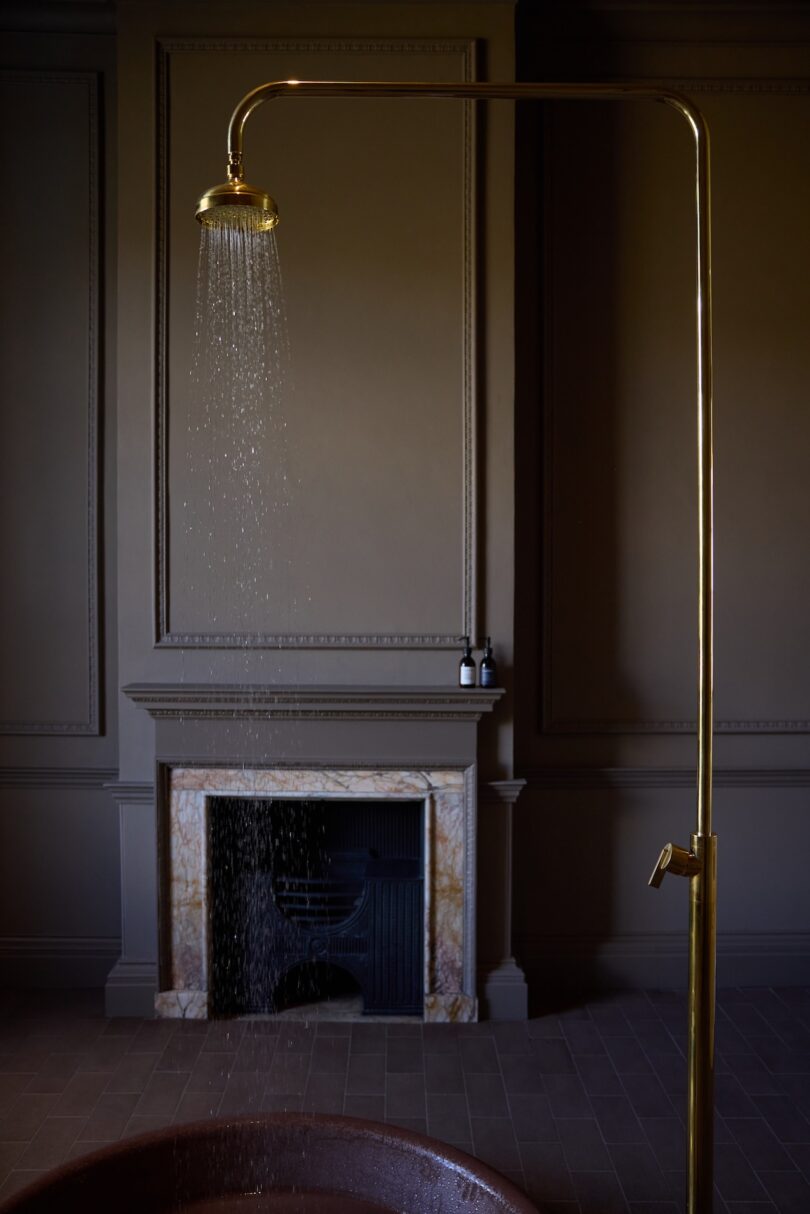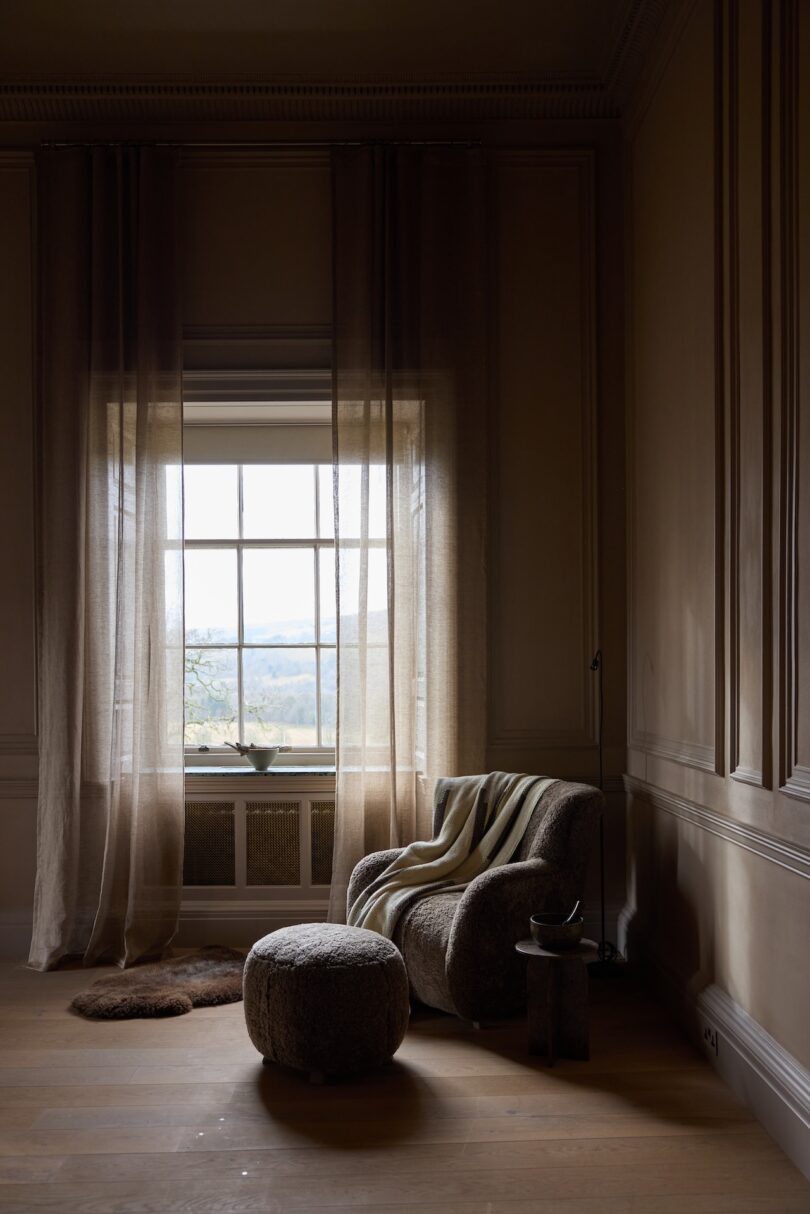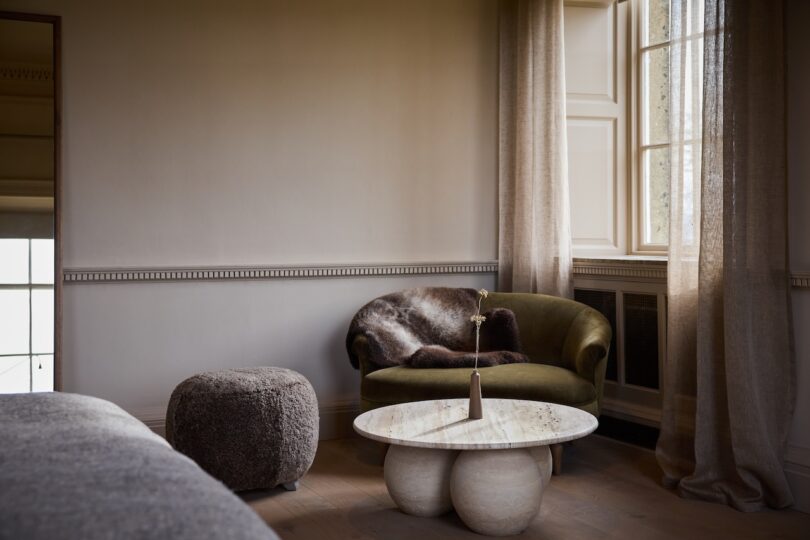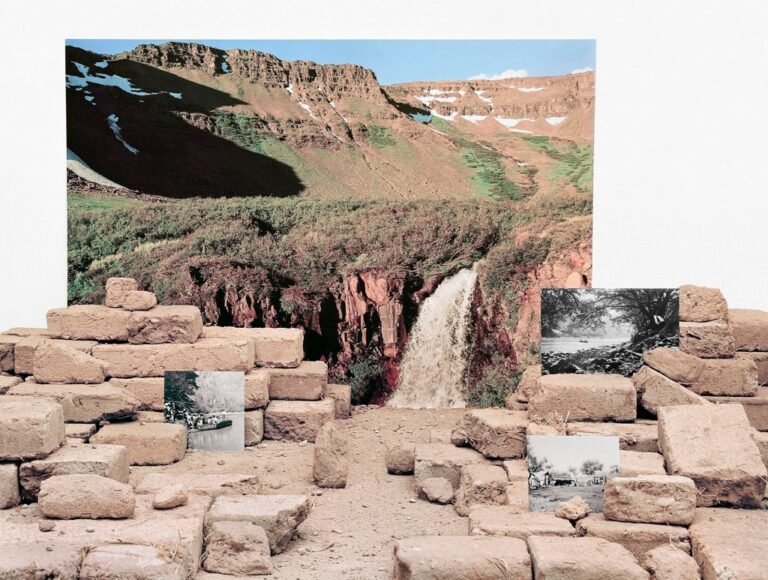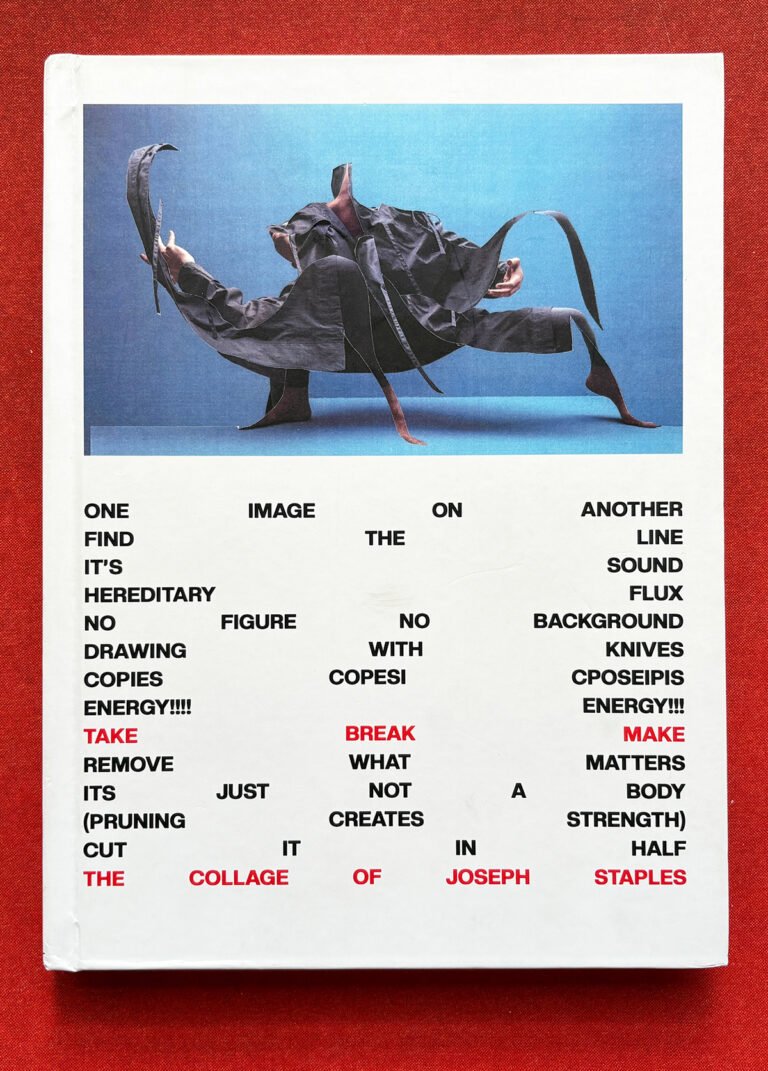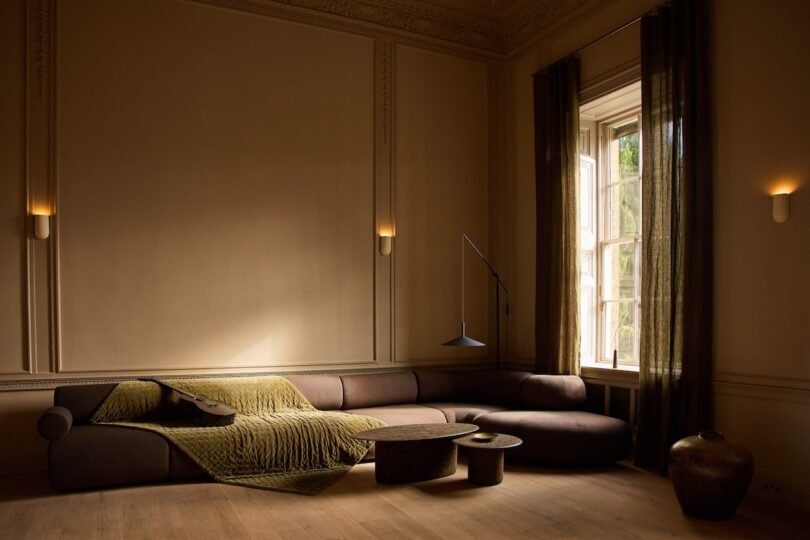
The challenge of reimagining a Grade I listed Palladian manor as contemporary hospitality lies not in imposing newness but in calibrating restraint. When it comes to Denton Reserve, John Carr’s 1778 North Yorkshire structure had accumulated decades of ornamental layering – the kind of decorative accretion that obscures rather than honors Georgian architectural logic. BOX 9’s intervention operates through subtraction and strategic insertion, working within heritage constraints that prohibited fixed partitions or built-in elements. The result positions bathrooms and furniture as sculptural objects that inhabit rather than alter the original spatial sequences, preserving sightlines while introducing functional program.
This approach grounds itself in a material palette derived explicitly from Yorkshire Dales geography – soil, stone, heather, moorland moss translated into pigment, and texture. The heather chandelier by Studio Amos exemplifies this localized sourcing, moor-harvested material woven into structural lighting that registers both as craft object and environmental model. Similarly, the reception table pairs British oak with sculptural cork spheres, a collaboration with Ted Jefferis that features cork as the project’s material protagonist. Cork appears throughout – cladding, furniture elements, structural components – chosen for thermal performance and acoustic dampening.
Leleni Studio’s living room table assembles entirely from marble industry waste offcuts, demonstrating how remnant materials can anchor spatial compositions when treated as primary rather than compromised choices. Jan Hendzel Studio’s games room intervention goes further by cutting down an original marquetry boardroom table to circular form, adding hand-turned legs and inlaying playing cards as marquetry detail.
Throughout the guest rooms, solid wool furniture by Jason Posnot’s Or This Studio positions work surfaces toward moorland views and grazing sheep, framing stillness as programmed experience rather than incidental amenity. Even paint receives material innovation, textured with crushed olive stones to create surface variation that responds to changing light conditions across the day.
Lou Davies goes onto say: “We set ourselves an incredibly high bar. Every single piece and material had to leave a legacy of positive change – whether through sustainability, supporting a maker, empowering an emerging studio, or championing innovation. If it didn’t have the potential to restore landscapes, lives or our relationship with craft, it didn’t come through the doors. What we used was respected, applied with minimal waste, and always designed to inspire care and reconnection with craft and nature.”
For more information on Denton Reserve and BOX 9, visit box-9.co.uk.
Photography by Lucy Franks and Sean Knott.
